Editor’s Note: The Astana Times continues its series of articles, Exploring Kazakhstan, City by City, in the marvelous city of Aktobe. We are setting out to unveil the rich diversity of cities to bring you closer to the heart and soul of Kazakhstan.
ASTANA — Aktobe, a vibrant city in western Kazakhstan, offers a unique blend of history, natural beauty and modern marvels. Known for its impressive chalk hills and significant role as an industrial hub, this city provides a fascinating glimpse into Kazakhstan’s storied past and dynamic present.
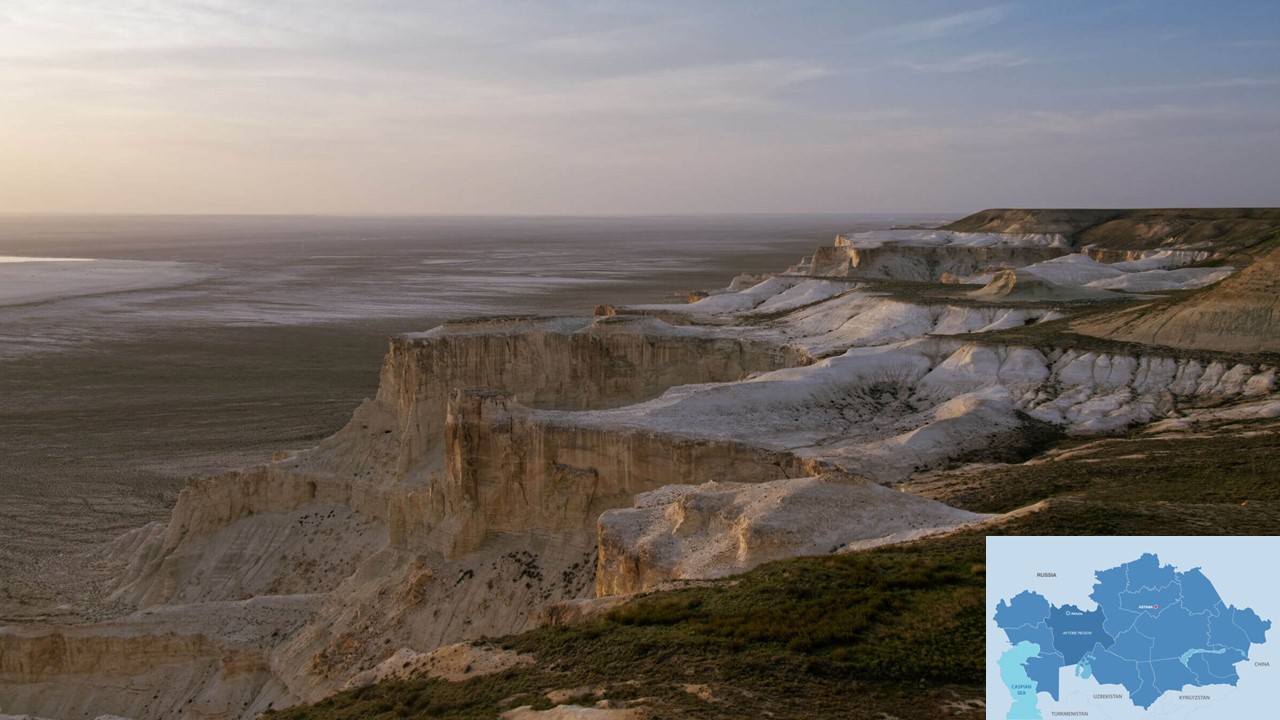
Geological wonder: Aktolagai Plateau in the Aktobe Region. Photo credit: Planetesoterica / Profile Arxitektor. Click to see the map in full size. The map is designed by The Astana Times.
Aktobe, which translates to white hill, reflects the chalky highlands visible in its surroundings. Covering an area of 2,300 square kilometers, Aktobe is located in the northern part of its namesake, Aktobe region. The city experiences a sharply continental climate, with cold winters and intensely hot summers, making spring and early autumn ideal times to visit.
Home to a population of over 581,000 people, Aktobe is the fourth-largest city in Kazakhstan and the largest in its western region. Its diverse population includes Kazakhs, Russians, and Ukrainians. The city is also the birthplace of internationally acclaimed singer Dimash Qudaibergen, adding a modern celebrity to its cultural identity.
Aktobe’s brief history
Aktobe’s modern history began in 1869 with the establishment of a Russian military fort on the Kazakh steppes. Originally a small fortress with a garrison and administrative buildings, the site attracted migrant peasants drawn to the region’s fertile land.
The settlement grew around this fort, eventually gaining city status in 1891. The arrival of the Orenburg-Tashkent railway in the early 20th century spurred rapid development, transforming Aktobe into a hub for trade and industry.
During the Soviet era, the city became an industrial powerhouse, particularly in metallurgy and chemical engineering. By the 2000s, a construction boom revitalized the cityscape, and today, Aktobe stands as a vibrant economic and cultural center.
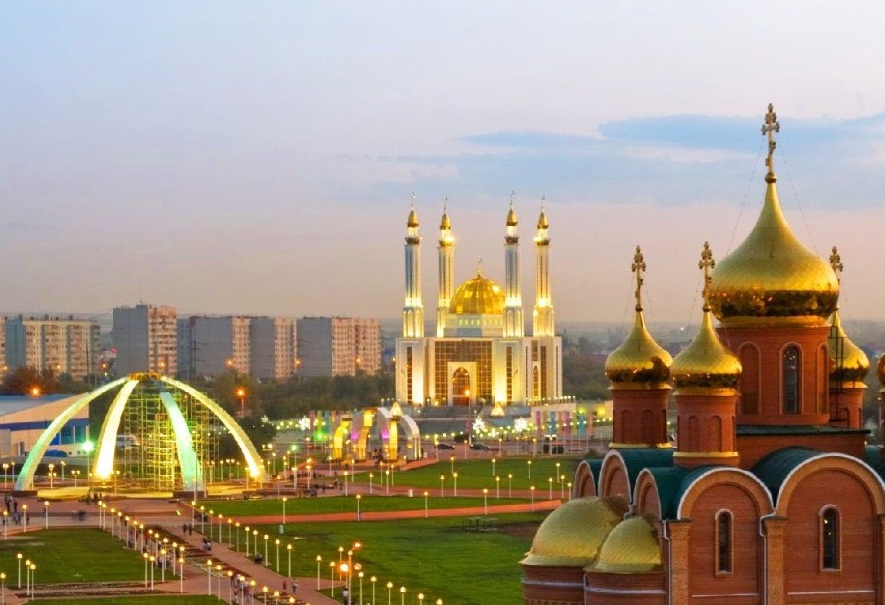
Aktobe’s most symbolic location is Unity and Accord Boulevard, a picturesque pedestrian space celebrating a symbol of Kazakhstan’s multicultural harmony. Photo credit: The Steppe
Exploring the city and its surroundings
One of Aktobe’s most symbolic locations is Unity and Accord Boulevard, a picturesque pedestrian space celebrating a symbol of Kazakhstan’s multicultural harmony. Established for the city’s 140th anniversary, this boulevard bridges two iconic religious landmarks: the Orthodox St. Nicholas Cathedral and the grand Nur-Gasyr Mosque. Walking along this tree-lined path offers a chance to reflect on the region’s commitment to unity amid diversity.
For those seeking an artificial wonder within a natural setting, the Volchiy (Wolf) Waterfall, created in the 1970s to divert glacial meltwaters, is approximately 120 kilometers from the city. Its haunting name comes from a local legend about a she-wolf mourning her lost cubs, and some visitors claim to hear echoes of her cries in the rushing waters. The waterfall is surrounded by lush birch and alder groves, making the trek a serene and visually stunning experience, especially in spring.
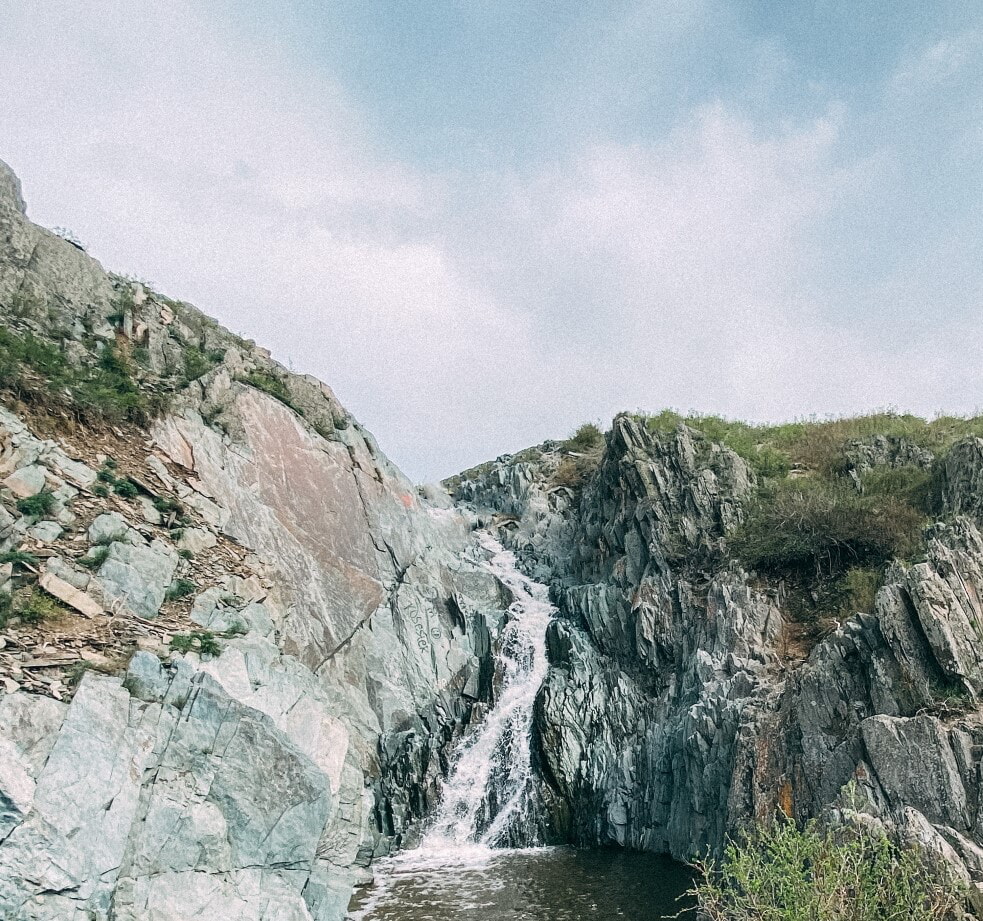
The Volchiy (Wolf) Waterfall, created in the 1970s to divert glacial meltwaters. Photo credit: VisitAktobe
The region’s landmark: The Aktolagai Plateau
Nature enthusiasts will find the Aktolagai Plateau an extraordinary experience. According to scientists, this vast chalk plateau has once been beneath an ancient ocean. It stretches over 50 kilometers long and nearly ten kilometers wide. Its stark white cliffs, caves and labyrinthine formations have earned it the nickname of an open-air museum. Tourists can see natural sculptures shaped by wind and water, with lifeless rocks transformed into figures such as a sphinx, camel, heroes, turtle, chess queen and other recognizable figures.
The plateau is a geological wonder due to fossils of marine creatures such as mollusks and shark teeth scattered throughout the area, offering a glimpse into a prehistoric world. At sunset, the plateau transforms from white to golden and finally to a soft blue hue, creating an ethereal atmosphere.
Locals regard it as a sacred site where legends blend seamlessly with the grandeur of nature. One version tells of Tolagai, a brave warrior who sought to fulfill his father’s wish of seeing the mountains. Upon discovering a snow-white rock, Tolagai lifted it and carried it home. As he traveled, the mountain began to crumble, forming a white ridge that eventually was named after the hero.
Historical sites and museums
Aktobe is home to several significant historical sites. The Khan Molasy Necropolis, where Abulkhair Khan—the unifier of the Kazakh zhuzes (tribes)—is buried, offers a profound connection to the region’s past. The memorial complex, built in 2015 to commemorate the 550th anniversary of the Kazakh Khanate, features a white mausoleum adorned with ancestral tamgas (seals) and soaring steel banners. This site attracts pilgrims and history enthusiasts who come to learn or honor Abulkhair Khan’s legacy.
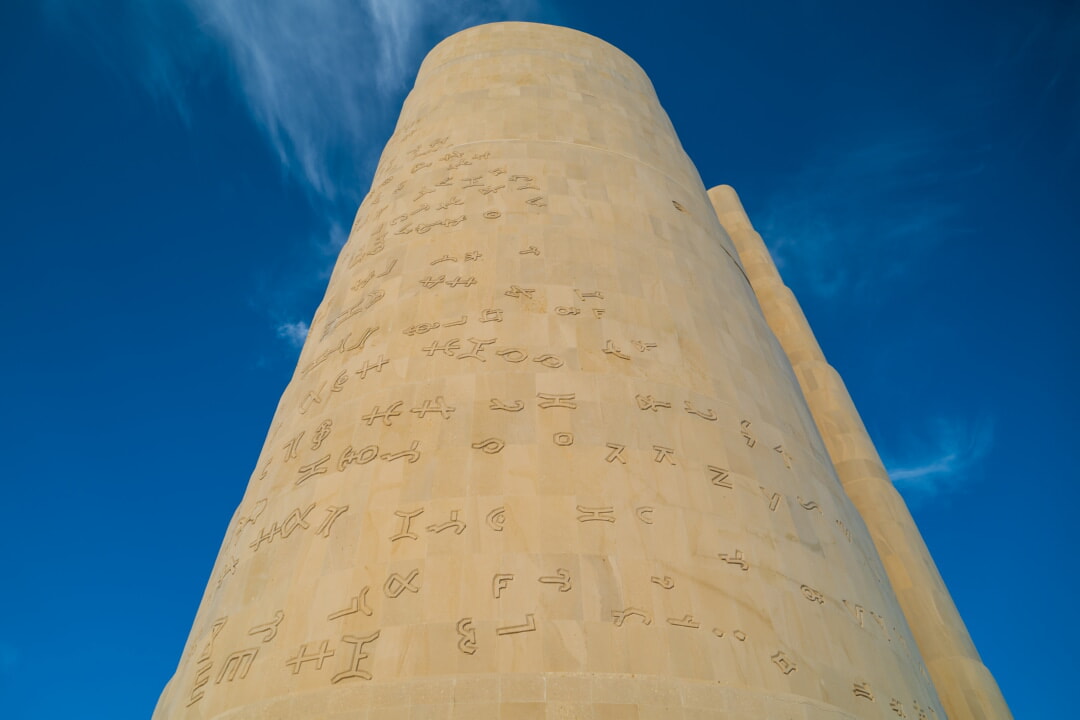
The Khan Molasy is a white mausoleum adorned with ancestral tamgas (seals) and soaring stele banners. Photo credit: Visit Aktobe
Another remarkable historical site is the Kobylandy Batyr complex, dedicated to the legendary warrior celebrated in Kazakh epics. The mausoleum, designed to resemble the batyr’s helmet, stands as a tribute to his courage in defending the Kazakh lands. Nearby, artifacts such as his saber and engraved tombstone connect visitors to the tangible legacy of this historical hero, whose deeds have been preserved in oral traditions passed down through generations.
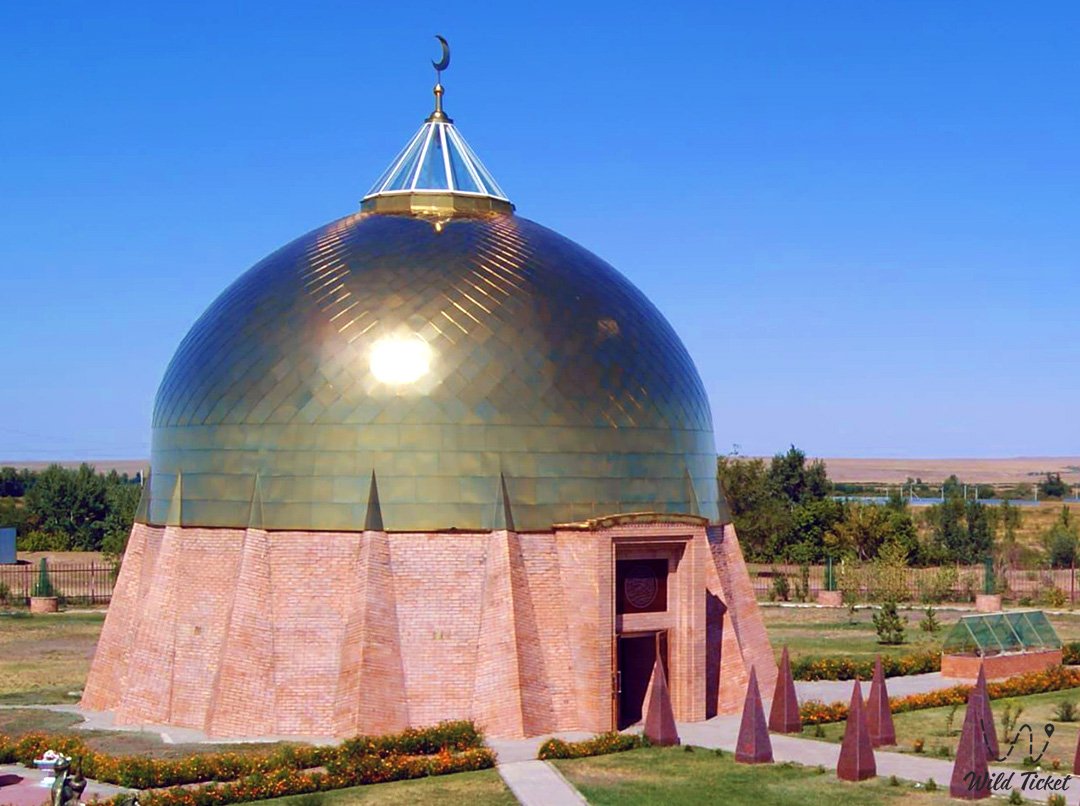
Kobylandy Batyr complex, dedicated to the legendary warrior celebrated in Kazakh epics, is designed to resemble the batyr’s helmet. Photo credit: Wild Ticket Asia
Getting to Aktobe
Aktobe is well-connected by air, rail and road. Aktobe International Airport offers flights to major cities in Kazakhstan and internationally. Scenic trains, bus routes and highways make it an accessible destination for road-trippers.
The series previously featured Atyrau, Karagandy, Kokshetau, Kostanai, Oskemen, Petropavl, Shymkent, Semei, Taldykorgan, Taraz and Zhezkazgan.


